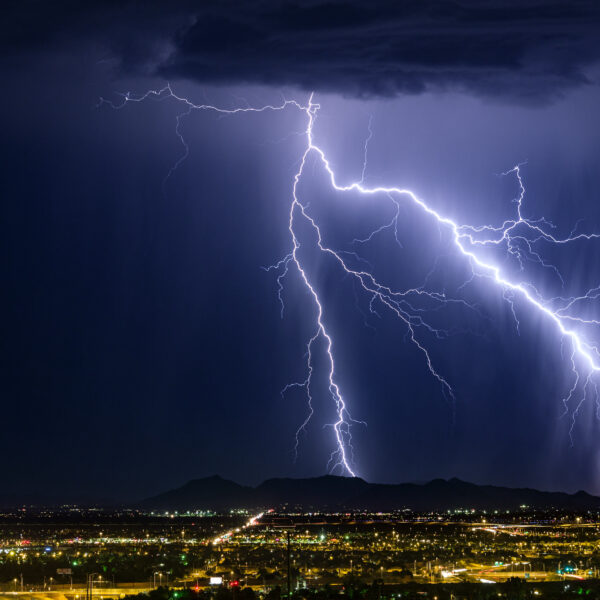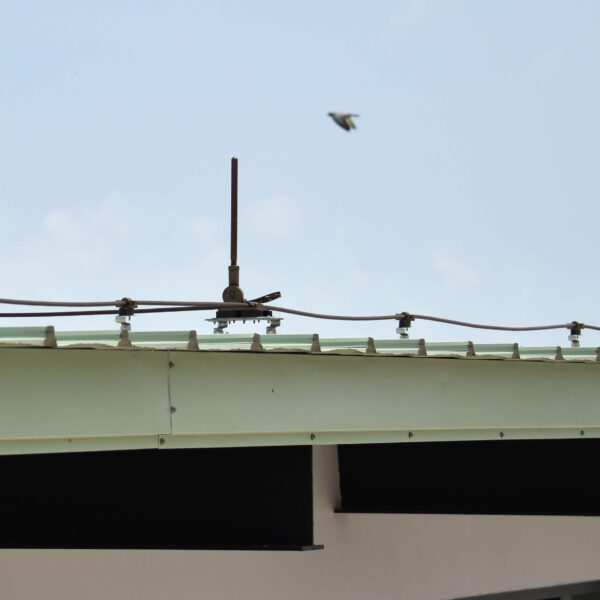All areas on the Earth’s surface are at some level of risk of damage from a lightning strike. Similarly, objects above & below the surface are at risk as well. No one can determine when lightning will strike, where it will strike, or the paths lightning currents take. Lightning current can flow through the air, wood, concrete & soil among many other obvious conductors. Lightning currents can reach millions of amps. Unfortunately, lightning has caused many injuries, deaths & damage to customer electrical systems & electrical / electronic equipment. Moreover, many customers who need lightning protection systems (LPSs) installed on their facilities don’t have them.
Utilities are sometimes asked to recommend a reputable engineering firm to help provide lightning-related services to their customers. A&E firms may be called upon to assist their customers with determining if such services are needed to help protect their customers facilities & equipment. End users, the parties who must deal with the aftermath of lightning, may also find themselves in need of such services. PBE Engineers can package any of our lightning protection services with other PQ engineering services to provide a bundled lower cost to our customers.




Understanding the risks associated with damage to a facility, piece of equipment & other conductive objects is part of managing PQ for every facility & campus. High-frequency over-voltages can be caused by a number of PQ phenomena including surge from lightning. Building structures, whether above or below ground—one floor or level or 20 or more stories above ground, are the primary building structures of concern with respect to damage caused by lightning. Structures also include conductive objects like utility transmission towers, above-ground utility power distribution systems & cellular towers, for example.
The level of risk depends on many factors. Factors include the geographical region where the facility is located, the construction of the facility & whether or not there are any existing lightning & protection devices installed such as surge protection devices (SPDs) & grounding electrodes. If a building has a wiring & grounding (W&G) system with problems, the LPS, which must be correctly bonded to the building’s grounding system at the right places, may not work correctly. Customer facility grounding systems & LPSs must “get along together”, or neither the grounding system nor the LPS will protect the building’s infrastructure & electrical / electronic equipment.
If an unprotected facility is struck by lightning, the lightning can travel through the walls instantly turning any moisture into steam which may result in a high-pressure explosion in concrete walls. Loss of electric service & injury to personnel are also high-risk factors. An unprotected facility or property can increase the exposure of people working in & around a facility; the facility itself including its construction—building materials & critical infrastructures—electrical, plumbing, HVAC, etc.; electrical & electronic equipment installed in a facility or on a property.
Facilities which have experienced lightning damage should contact PBE Engineers to discuss the lightning event & the damage it caused. Expert lightning assessment engineers at PBE have the expertise to evaluate facilities & equipment struck by lightning, conduct a detailed lightning assessment & provide custom engineering designs for LPSs for all types of facilities—residential, commercial & industrial: indoor & outdoor. In laymen’s terms, one objective of an LPS is to steer lightning currents away from objects that can suffer damage caused by high lightning currents.
An LPS is designed to protect a structure from damage due to lightning strikes. The objective of an LPS is to intercept such strikes & safely provide a low-impedance path easiest for the extremely high lightning currents to flow to ground. An LPS includes a network of air terminals, bonding conductors, & ground electrodes designed to provide a low-impedance path to ground for potential strikes.
PBE expert lightning engineers can provide comprehensive lightning risk assessments & lightning protection designs to help ensure that a lightning strike will not cause catastrophic failures of facilities & equipment, & injuries or fatalities at facilities. PBE’s lightning risk assessment & proposed lightning protection designs illustrate the current risks & necessary steps that should be taken to meet the guidelines as set out in NFPA 780-2023 – Standard for the Installation of Lightning Protection Systems & IEEE 998-2012 – IEEE Guide for Direct Lightning Stroke Shielding of Substations.
NFPA 780-2023 provides installation requirements for LPSs to safeguard people & property from fire risk & related hazards associated with lightning exposure. While NFPA 780-2023 is not enforceable by law, it is generally recognized as the primary lightning protection document in the United States. The purpose of NFPA 780-2023 is to safeguard persons & property from lightning.
NFPA 780-2023 has two risk assessments: a simplified version & a detailed version. The simplified version tells you if your site needs an LPS, while the detailed version tells you if a partial LPS will work, or if you need a full system. PBE typically runs both versions to determine where cost savings can be made.
Performing a lightning risk assessment to determine if a facility needs a LPS requires an PBE lightning engineer to evaluate environmental factors & tolerable risk factors. Calculations are performed to determine if an LPS with SPDs is required to manage the risks of facility & equipment damage.
PBE’s lightning strike risk assessments are calculated using several environmental factors including:
The following risks are also factored into the calculations:
Based on an analysis of all the above factors, a detailed lightning risk assessment & lightning protection plan is developed for one or more facilities & for the site as a whole, if required. The objective is to achieve an acceptable risk level with the proposed LPS according to NFPA 780-2023.
PBE’s lightning strike risk assessment process typically follows these steps:
A lightning risk assessment & an LPS is critical to helping ensure managed PQ for facilities & sites. Lightning assessments & protection systems are carried out to help protect employees, visitors, equipment, electrical systems & critical business processes. PBE provides comprehensive lightning risk assessments & lightning protection plans which include a full detailed report with findings & recommendations for implementing an LPS that meets NFPA 780-2023 requirements.
PBE’s lightning risk assessments & lightning protection designs include:
Want to learn more about PQ & keep up with new PQ problems facing customer facilities, plus much more? Subscribe to one of PBE Engineers’ newsletters that’s free!